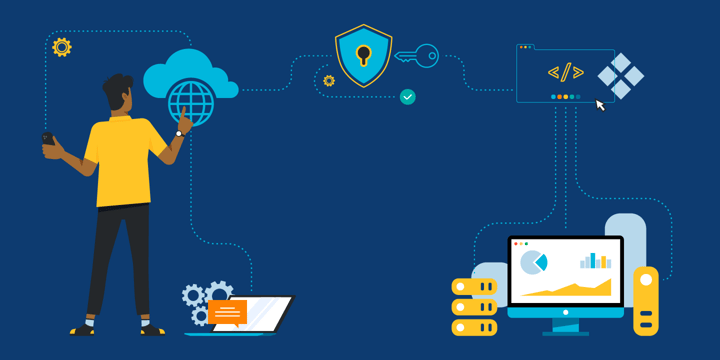At TechSoup, we strive to keep great digital tools available for your nonprofit. We also work to keep the companies that provide these offers satisfied that they are achieving their intended social impact. In fact, these companies — particularly those that offer cloud subscriptions — measure their impact success on your actual adoption and use of the licenses. We'd like to take a moment to explain this a bit further and provide some guidelines and suggestions to consider when requesting offers and licenses through TechSoup.

As we all shift to a cloud-first world, it's important that your strategy for acquiring donated or discounted digital tools matches your plan to use them. But this isn't just crucial to the enduring success of large-scale tech philanthropy programs like those from Microsoft, Adobe, and Zoom. It's also critical to how your organization can best benefit from these tools over time, with enhanced security measures, flexibility, and the ability to manage an increasingly remote workforce.
We encourage all nonprofits to have a digital plan. If you can't immediately imagine your dream scenario, there's still a better chance of getting there if you have a plan in mind — even if it's just the first steps in the right direction. But before we get into matching donation requests with your cloud adoption strategy, let's dig a bit deeper into how tech providers' mindsets have recently shifted.
Tech Is Evolving. So Is Tech Philanthropy.
As with any product "grant," tech providers first look at "conversion" — whether or not organizations actually use what they request. Next, they want to see how those products are used to support the work that nonprofits do in their communities. This is particularly true for cloud licenses, as the business and philanthropy models related to this technology are different from those of their on-premises predecessors. This software-as-a-service (SaaS) approach has grown significantly over the past several years.
Here are a few key points to consider:
- To providers, cloud subscriptions are seen as more of a "relationship." The provider not only has insight into how many products you've selected but can view the extent to which you are using those products at your organization.
- Each cloud license requires the tech provider to allot a portion of their capacity. If you aren't using all of the licenses you request, the tech providers' social impact team thereby may have a lower capacity to support other organizations like yours.
- Tech social impact teams get excited about what you do when you use their products. The best way to ensure generous giving programs and nonprofit focused offers is to gain experience in using the product for positive impact on your organization's important work.
Our tech provider partners create nonprofit pricing, products, and programs to benefit our community, and they often have to work hard internally to make sure they can make solutions available to us at no or little cost to the sector. But their goal is to see real digital transformation taking place. They know that every incremental effort to help make you more productive, visible, sustainable, and operational helps our communities thrive and prosper, and they are excited to support your mission.
Our Guidelines and Suggestions for Requesting Cloud Licenses
In order to use tech donations or discounts in a way that makes sense for your nonprofit, while being mindful of our technology donors' goals, we've developed a few tips to keep in mind. Think about these as you request new licenses or as you evaluate the licenses you may already have.
- Only request what you think you will need for the next 6 to 12 months. Longer time frames make it harder to accurately plan for the quantity of licenses you may need. Thinking too long-term can also make it difficult to understand how your teams will use the products, and it can limit potential choices you may have if newer solutions or offerings become available. Try not to max out on donation quantities just in case you may need them at a later time. Hoarding these for a rainy day may put other organizations that may need the licenses today at a disadvantage.
- Pay as you go for cloud licenses to manage costs and keep your organization secure. The beauty of monthly or annual subscription products is that you can pay for what you need and not carry costs that are not necessary. Unused licenses that belong to employees or volunteers who may have left your organization can put your data at risk. When employees leave, make sure to end their licenses so you manage your costs wisely and ensure that you are keeping your organization's data as secure as possible.
Perform an audit of all the cloud licenses you have subscribed to and compare that to the licenses that are currently in use. Then, either cancel licenses or make adjustments to the type of subscriptions you have accordingly. This is equally a good practice even if those subscriptions are free. Program eligibility and rules around how many subscriptions you can receive at a time will always be in play, so please keep these in mind as you develop your plan around acquiring cloud licenses. - Optimize your setup and train your staff. Once you roll out any new technology, make sure you prioritize training for your team to make sure you can make the most out of the technology you are requesting. TechSoup offers a variety of training courses and services, all designed to help you use technology in the best way possible. If you're interested in getting help with Microsoft solutions specifically, head over to the Microsoft Digital Skills Center. Our Tech Implementation Services can help you at any stage of your journey to the cloud. We also have a blog, articles, webinars, and online forums, all tailored to help you make the most out of the technology offers — and to support your nonprofit's unique process toward digital transformation.
Additionally, you can train your organization to spot cyberthreats through training offered from KnowBe4 and develop valuable nonprofit management skills through the Learning Institute Certificate Series (both of which are available in the TechSoup catalog). - Share stories of your impact. Provide us — or the companies directly — with feedback and stories about how these tools have allowed you to better pursue your mission. Let us know what other features might improve your ability to do your important work. As we said, the end goal for social impact teams is to promote real digital transformation in the sector. Our partners listen closely to the real, on-the-ground needs of nonprofits. Also make sure to tell your peers at other nonprofits what technologies worked for you and why. Your experience can help power others' impact as well.
We want to work together to make sure you can get the most out of the technology resources available to you, and we are here to help. And don't worry, even if you are not ready to use those solutions just yet, we'll still be here with plenty of offers to help when you are.







